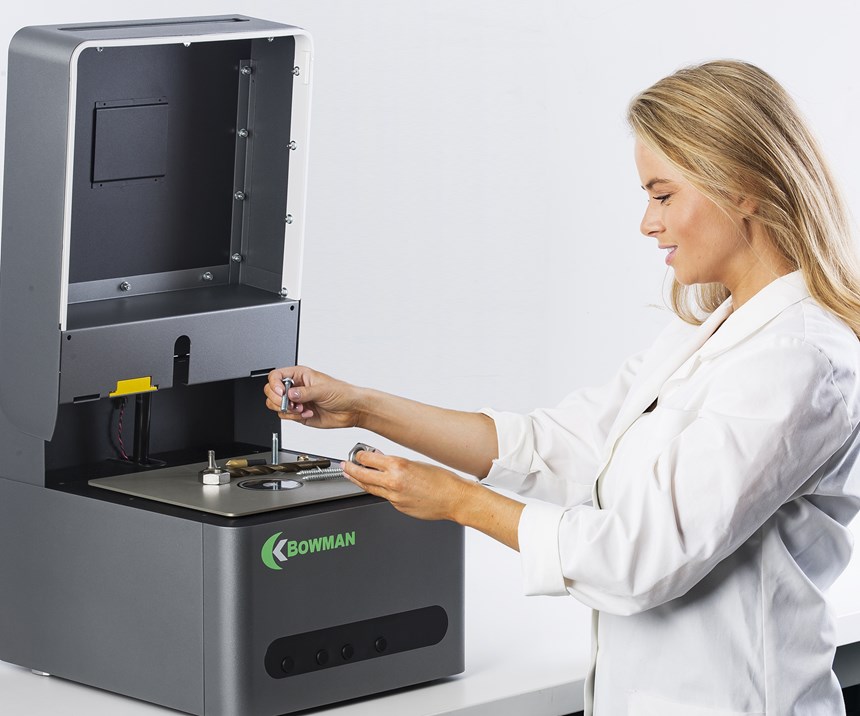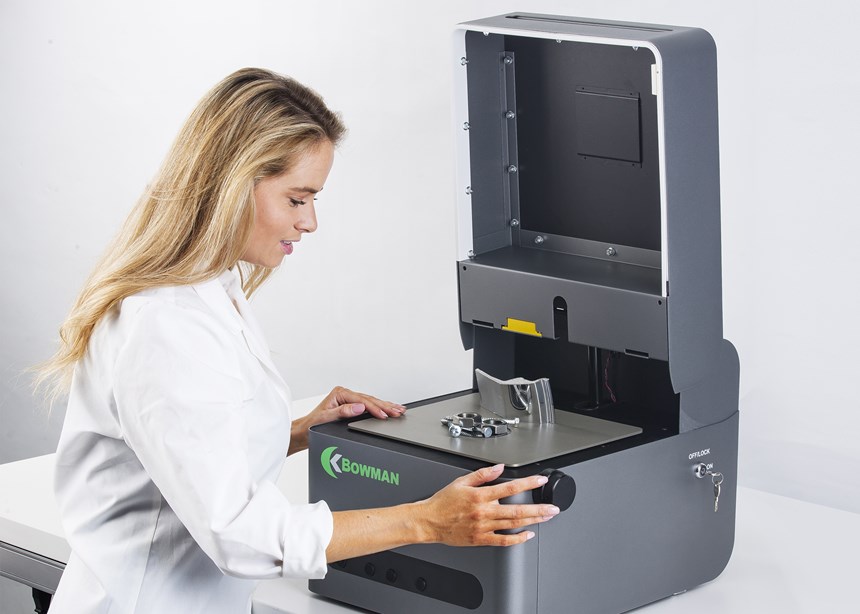Measurement System Quantifies Coating Thickness, Offers Elemental Analysis
Smaller Measurement System Quantifies Coating Thickness and Offers Elemental Analysis for labs and production lines
Bowman, a manufacturer of X-ray fluorescence (XRF) quality control instruments, has added a G Series to their suite of benchtop XRF plating measurement systems for coating thickness and solution analysis.
This series is designed for jewelry, fasteners and other precious metals analysis as it can quantify zinc, zinc-nickel and other anti-corrosion coatings.
Two features of the series include “bottom-up” measurement using a motorized z-axis with laser-based autofocus, and precision video imaging. An available manual XY stage with 1.5” x 1.5” travel facilitates positioning of small and large parts.
The standard configuration includes a single-fixed collimator, solid-state PIN detector, and long-life microfocus X-ray tube. As with all Bowman models, the components can be upgraded to include multiple collimators, variable focal camera or SDD detector.
These instruments can simultaneously measure up to five coating layers with 10 elements in each layer for a total of 25 elements. Element range is Al (13) through U (92.)
To quantify coating thickness from the detected photons, these systems run Xralizer software, which combines controls with timesaving shortcuts, extensive search capability and one-click reporting. The software also allows creation of new applications by the user and includes full-access instruments from the day of install. There are no dongles or lockouts to complicate, delay or add cost.
This product was developed for both labs and production environments, and may be advantageous for users with limited benchtop space or budget limitations.
Related Content
-
AESF Heritage: The 2002 Hydrogen Embrittlement Seminar No. 4: Hydrogen Embrittlement – A Personal View
This is last of four papers presented during AESF Week 2002 at the Rosen Center in Orlando, Florida on January 30, 2002, as part of the Hydrogen Embrittlement Seminar. This paper presents a comprehensive overview of the research into hydrogen embrittlement at the turn of the century. The full paper on this work can be accessed and printed at short.pfonline.com/NASF24Sep4.
-
BYK-Gardner Offers Protective Coatings Field Test Kit
New field kit includes tools for a proper assessment of environmental conditions prior to coating applications and film thickness evaluation.
-
Shedding Light on Surface Inspection
State-of-the-art reflector-based lighting system improves luminosity and ergonomics for surface inspection tasks while reducing energy usage.

















.jpg;maxWidth=300;quality=90)
